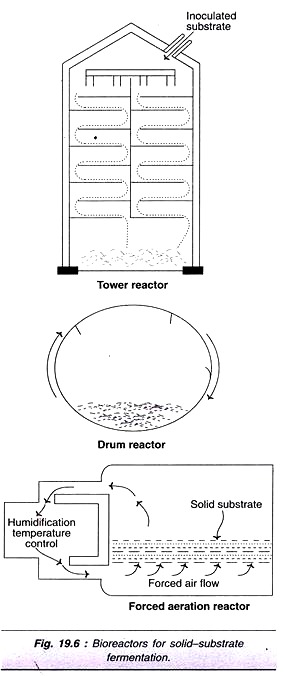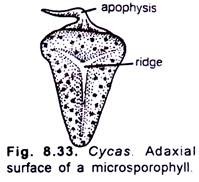After reading this article you will learn about the classification of vasodilators.
Classification:
1. Organic nitrates:
(i) Nitroglycerin (glyceryl trinitrate)
(ii) Amyl nitrite
(iii) Isosorbide di-nitrate
(iv) Erythrityl tetra nitrate
(v) Pentaerythritol tetra nitrate
2. Arterial Vasodilators:
(i) Hydralazine
(ii) Minoxidil
(iii) Diazoxide
3. Arterial and venous vasodilators:
(i) Sod. nitroprusside
(ii) Prazosin
(iii) Terazosin
Nitrates:
Nitrates relax vascular as well as all other smooth muscles by forcing an active free radical nitric oxide (NO). ‘NO’ binds with the guanylyl cyclase enzyme in the cytosol and activates it to produce cyclic GMP (cGMP), which activates a cGMP-dependent protein kinase resulting in a series of alterations in various enzymatic proteins.
This eventually leads to the dephosphorylation of myosin light chain (MLC). The result is relaxation of smooth muscle because phosphorylation of MLC regulates the maintenance of contractyl state in smooth muscle. The pharmacological and biochemical effects of the nitro vasodilators appear to be identical to those of the endothelium derived relaxing factor (EDRF itself is nitric oxide).
Pharmacological effects:
These drugs are mainly used to treat or prevent angina pectoris and acute as well as chronic congestive heart failure (CHF). They dilate the large epicardial and collateral coronary arteries selectively, which favours the distribution of blood to ischemic areas. The total coronary blood flow is increased (but not in patients with atherosclerosis).
The nitrates reduce the myocardial oxygen requirements by decreasing both preload and afterload of heart. They dilate arteries and thereby reduce mean systemic arterial pressure. Thus, afterload of the heart is reduced.
They cause peripheral pooling of blood by dilating veins, which results in decreased ventricular end-diastolic pressure and volume (preload). This also helps in reducing tissue pressure around subendocardial vessels, favouring the redistribution of coronary blood flow to this area.
The nitrates also relax the smooth muscles of bronchi, biliary tract, GI tract and uterus. They may cause headache by dilating blood vessels of brain and hence increasing intra-cerebral pressure. They may also cause flushing on skin due to dilatation of cutaneous vessels. These drugs are also useful in myocardial infarction and paroxysmal nocturnal dyspnoea.
Artereiolar Vasodilators:
These drugs are commonly used as antihypertensive agents. They relax arterial smooth muscle resulting in fail of arterial blood pressure and peripheral vascular resistance.
They produce reflex sympathomimetic action resulting in increased cardiac output, heart rate and renin secretion. They also cause salt and water retention. These two effects reduces the hypotensive effect of the drugs. That’s why they should be used in combination with a β-adrenoceptor blocker and a diuretic.
It is a phthalazine derivative. It directly relaxes arterial (not venous) smooth muscle and minimizes the incidence of postural hypotension. It may reduce diastolic b.p. more than the systolic one. The molecular mechanism of its effect is not known, β-blocker and a diurectic is used with it to minimise its reflex sympathetic tone and salt and water retention. It is used in moderate to severe hypertension, acute and chronic CHF.
It is a pro-drug which is metabolized by hepatic sulfotransferase to the active minoxidil N-O sulphate. This minoxidil sulphate activates the ATP-dependent K+ channel to open, resulting in K+ efflux. It causes hyperpolarization and relaxation of smooth muscle of blood vessels.
Like other drugs (hydralazine and diazoxide) under the group, minoxidil dilates arterial blood vessels without affecting the capacitance vessels. It decreases peripheral vascular resistance more than hyralazine does. It increases the blood flow to skin, skeletal muscle, GI tract, and heart more than to the CNS.
It also produces reflex sympathomimetic effects, like increased cardiac output and myocardial contractility. That’s why, like others, this drug should never be used alone but in combination with a diuretic and a β-blocker. It is mainly used in severe hypertension which is not respondable to the conventional antihypertensive drugs.
Diazoxide:
It is one of the two important antihypertensive drugs (another is Sod. nitroprusside) used for hypertensive emergencies. For this purpose, it is given, through i.v. route only. Orally, it is used to treat hyper-insulinemia induced hypoglycemia, because it inhibits the release of insulin.
The mechanism of action of this drug is similar to minoxidil. It activates ATP- sensitive K+ channels and thus relax vascular smooth muscle. It acts mainly on arterioles and causes fall of both systolic and diastolic b.p.
Its sympathomimetic effects are increase in heart rate the cardiac output, renin secretion, and salt and water retention, which counteract its hypotensive effect unless and until it is combined with a diuretic and a β-adrenoceptor antagonist. It is chemically related to thiazide diuretics though it is not able to produce diuresis. The drug can also relax other smooth muscles in addition to vascular muscle.
Arterial and Venous Vasodilators:
They cause fall in both arterial and venous pressure having more effect on arterial blood vessels.
Sodium Nitroprusside:
It is clinically used in hypertensive emergency through i.v. infusion with sterile 5% dextrose. Action is initiated within 1 min of starting infusion and terminated within 1 min of stopping infusion. Therefore, it should be followed by an oral maintenance therapy with the conventional antihypertensive agents.
Nitroprusside is a nitro-vasodilator. It is metabolized by vascular smooth muscle cells to its active metabolite, nitric oxide (NO). Nitric oxide activates guanylyl cyclase, leading to the formation of cGMP and vasodilation.
It dilates both arterioles and venules without any effect on other smooth muscles. The drug-induced increase in venous capacitance results in decreased cardiac preload and thereby myocardial oxygen demand for a given output.
Therefore, it is also suitable for congestive heart failure (CHF). It increases renin secretion. In normal heart, it increases heart rate and decreases cardiac output, while in failure heart it produces just opposite effects.
When the hypertensive emergency is complicated with coronary insufficiency or pulmonary oedema, Sod, nitroprusside is preferred over diazoxide , because the former drug decreases myocardial oxygen demand. The drug may also be used to treat CHF and acute myocardial infarction.
Nitroprusside is rapidly inactivated by hepatic enzyme, first to cyanide and then to thiocyante. The rate of conversion from cyanide to thiocyanate is dependent on the availability of sulphur (mostly as thiosulphate). Occasionally, when sulphur stores are low, and large doses of nitroprusside are administered for a prolonged period, cyanide toxicity may develop.
Prazosin, Terazosin and Doxazosin:
They are selective α1 adrenoceptor blockers and dilate both the arteries and veins, resulting in decreased peripheral vascular registance and blood pressure. Unlike other nonselective α-adrenoceptor blockers, they do not usually cause reflex tachycardia.
They have little effect on cardiac output and renin activity. Long term therapy with these drugs may cause fluid retention. They are used to treat mild to moderate hypertension. Diuretics and β-adrenergic receptor antagonists enhance the efficacy of these α-blockers.


